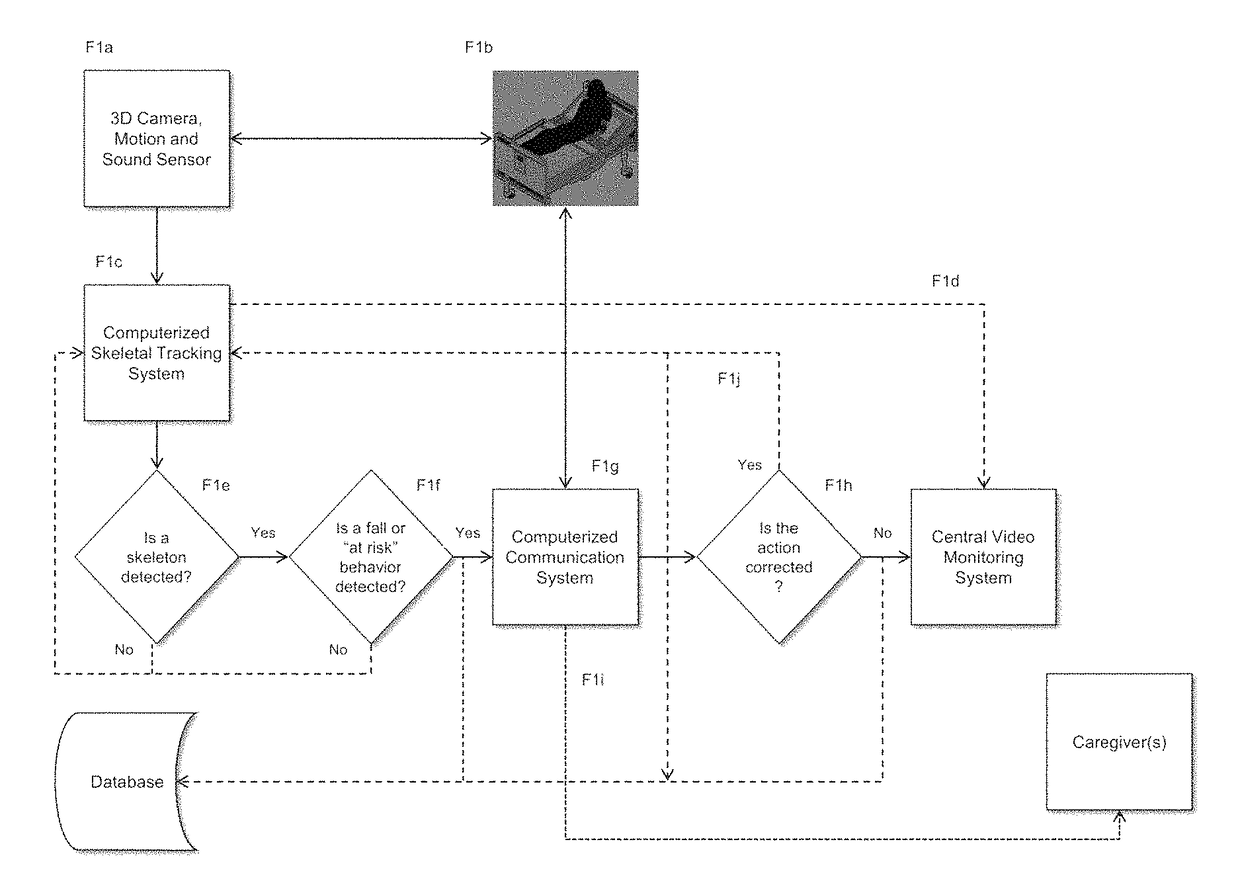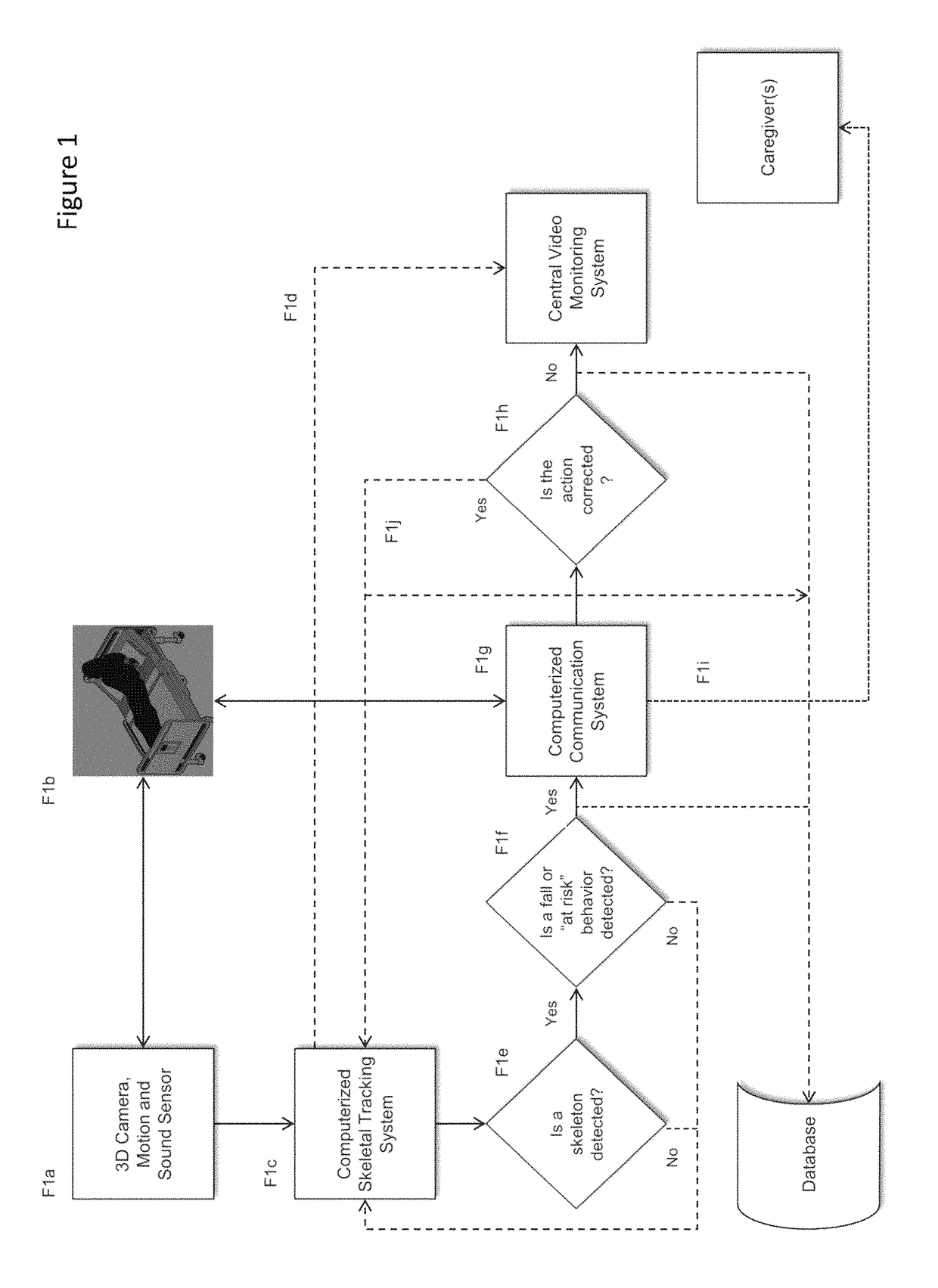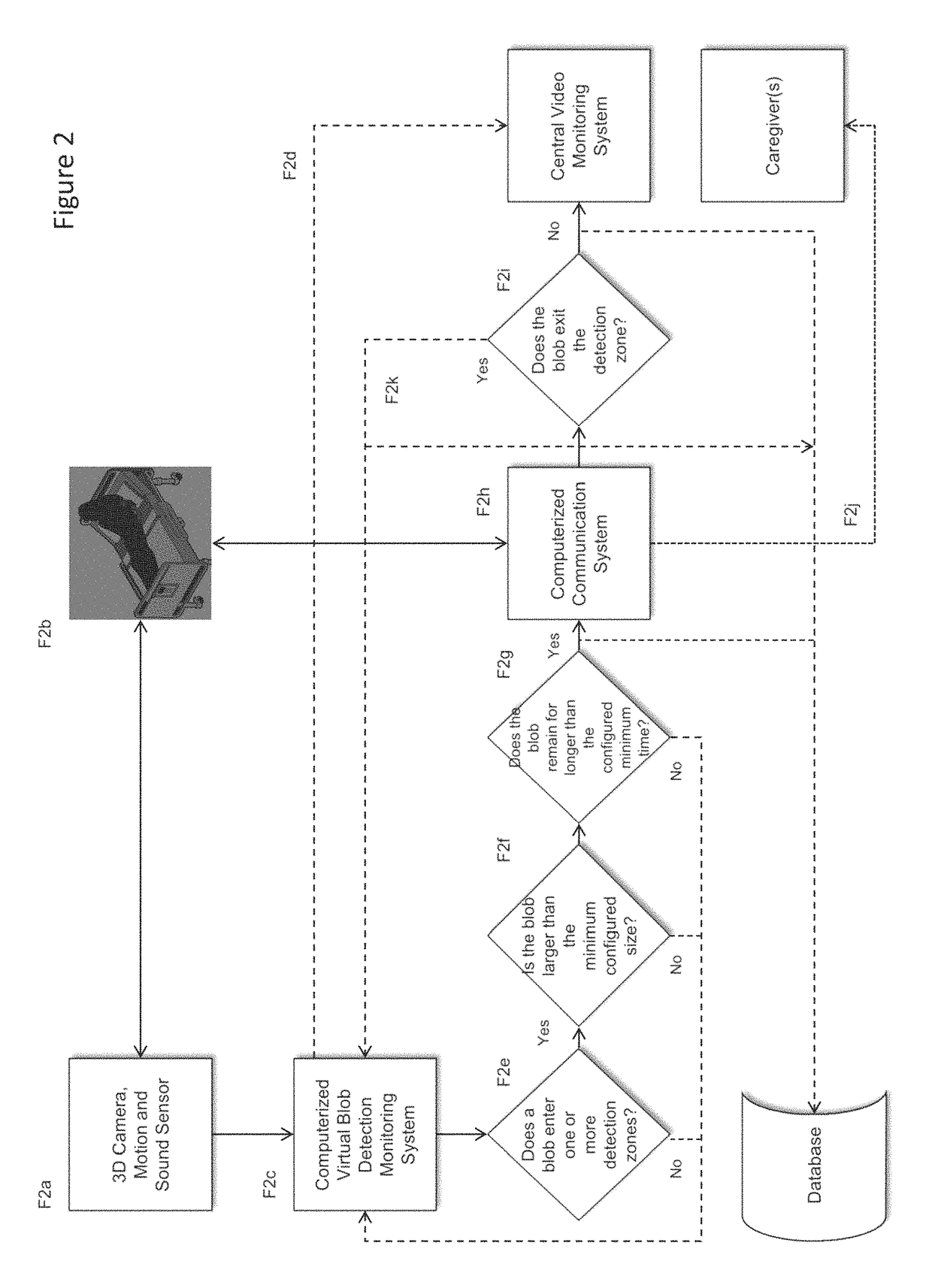Method for determining whether an individual enters a prescribed virtual zone using skeletal tracking and 3D blob detection
a technology of skeletal tracking and blob detection, applied in the field of patient monitoring systems, can solve the problems of affecting the ability of the detection/monitoring system, increasing the false positive rate of detecting falls, and “at risk, false positives can occur” to achieve the effect of reducing the impact of falls and preventing or reducing falls
- Summary
- Abstract
- Description
- Claims
- Application Information
AI Technical Summary
Benefits of technology
Problems solved by technology
Method used
Image
Examples
Embodiment Construction
[0017]FIG. 1 illustrates a block diagram for the computerized skeletal tracking configuration, monitoring and alerting system and method of the disclosed system and method. Specifically, FIG. 1 shows the workflow for monitoring an individual's status through the use of one or more 3D Camera, Motion and Sound sensors.
[0018]At step F1a, one or more 3D Camera, Motion and / or Sound sensors can be installed in the patient's or individual's room. At step F1b, the one or more 3D Motion and Sound sensors can be configured to recognize the patient or monitored individual using biometric identifiers such as facial recognition, height, distance between points on the body, etc. The patient's body can be recognized and tracked as one or more skeletal components. Alternatively the patient can be identified by means of a user creating a three-dimensional zone around the patient through a software application stored on the Computerized Skeletal Tracking System or through the use of an electronic tra...
PUM
 Login to View More
Login to View More Abstract
Description
Claims
Application Information
 Login to View More
Login to View More - R&D
- Intellectual Property
- Life Sciences
- Materials
- Tech Scout
- Unparalleled Data Quality
- Higher Quality Content
- 60% Fewer Hallucinations
Browse by: Latest US Patents, China's latest patents, Technical Efficacy Thesaurus, Application Domain, Technology Topic, Popular Technical Reports.
© 2025 PatSnap. All rights reserved.Legal|Privacy policy|Modern Slavery Act Transparency Statement|Sitemap|About US| Contact US: help@patsnap.com



